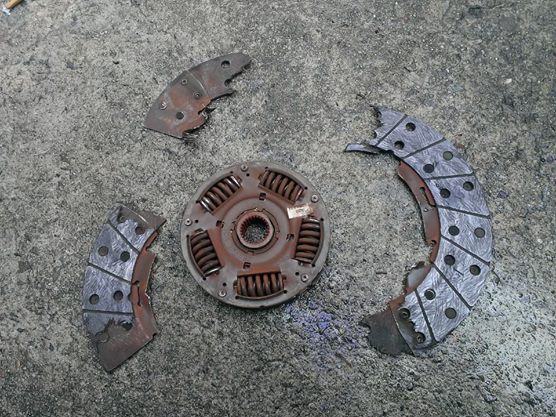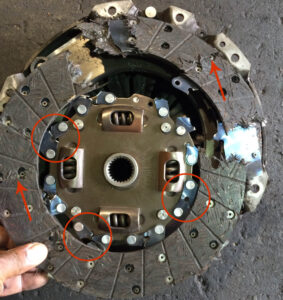General limits
Car manufacturers rarely share specification for their products. It is an industry “secret”.
Generally speaking:
- In the pre-2007 era, everything was usually designed with Pareto principle of 80/20 – everything is used at 80% of its designed capacity.
- In the post-2007 era, the crisis and wide use of CAD/CAM systems brought us consumer-grade crap that fails right after warranty expiration. We design typically at 90-99% of mechanical capacity.
Clutch
There are many ways to destroy a clutch:
- Under revving – if you see your dad driving at idle speeds in 6th gear…just punch him in the face, and call him retarded.
- Racing…I have ripped off friction pads from the clutch while testing the synchro in the gearbox…
- Full load at low engine speeds.
We have never seen damaged clutch by high revs and proper engine utilization, but usual car users that “save” fuel are the best in clutch destruction!

Estimate without official ratting for VW 2.0 TDi, 103kW, DMF clutch:
- Engine torque 320 Nm + 20% = 384 Nm or ~ 400Nm clutch ratting.
Beware, OEM clutch will eventually fail if used at maximum engine loads – we managed to destroy a clutch just by high-G fun in mountains where are you at constant full engine load.
Gearbox
Estimate without official ratting for VW 2.0 TDi, 103kW:
- Engine torque 320 Nm + 20% = 384 Nm or ~ 400Nm clutch ratting + 20% = 480 Nm or ~ 500Nm.
VAG gearboxes nominal torque:
- 02Q (MQ 350, 6 gears) – 500Nm
- 02E (DQ 250, 6 gears) – 500 Nm
There are over 200 gearboxes just for VAG cars. Use general estimate for your car or contact us for more details regarding VAG gearboxes.
Engine oil
If you do proper maintenance, do not worry too much… Of course, stick to engine oil specified by manufacturer.
It is serious on old PD engines, viscosity doesn’t matter as long as you use correct specification such as VW 505.00
Engine head gasket
Injectors
What you see in ECU calibration maps is your 80-90% limit, or do you really think 60 mg injectors can inject 100 mg?
Keep on dreaming.
Turbochargers
Turbocharger is tricky bitch and there are many ways to destroy it:
- thermal shocks
- cycles
- over-speeding/boosting
Generally speaking, any stock turbocharger for VW 1.9 – 2.0 TDi can be over-boosted by 10% at 2200 – 3200 rpm at the expense of reduced durability, and high risk of clutch failure.

Leave a Reply